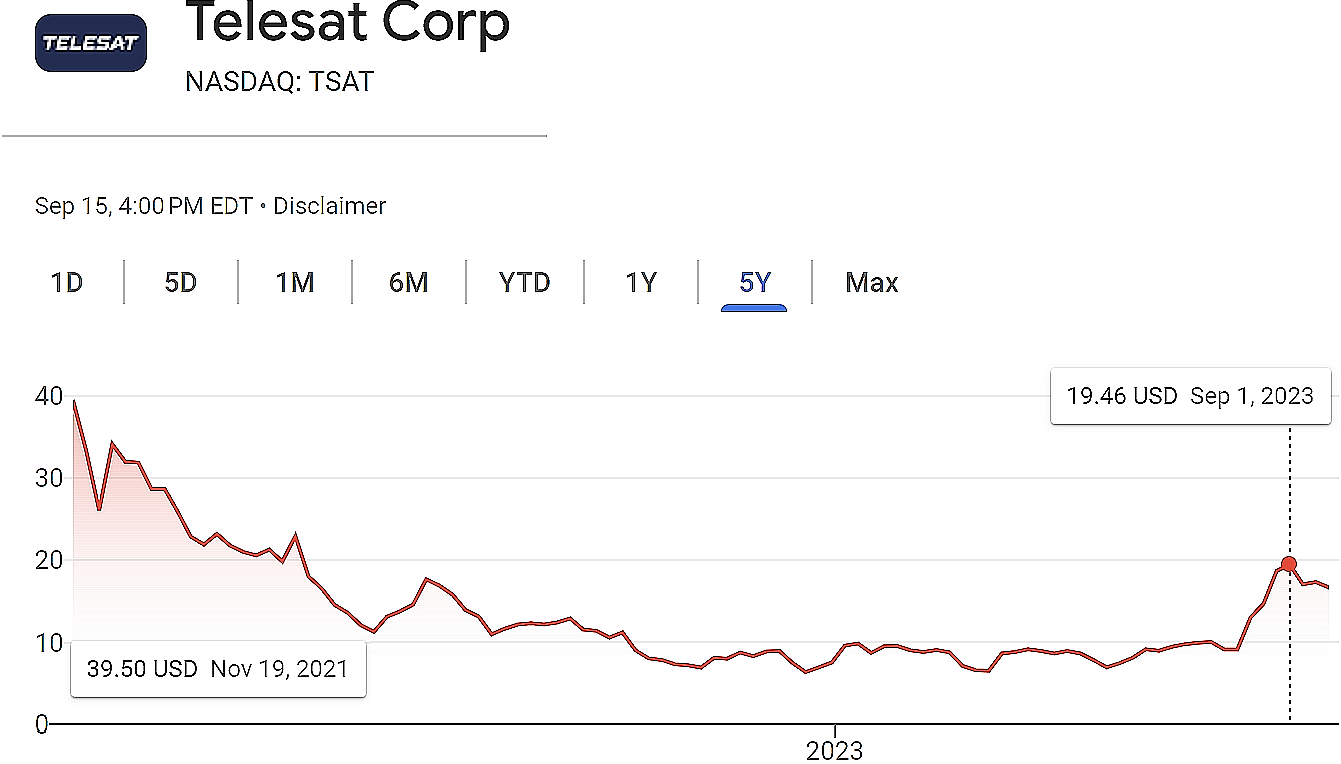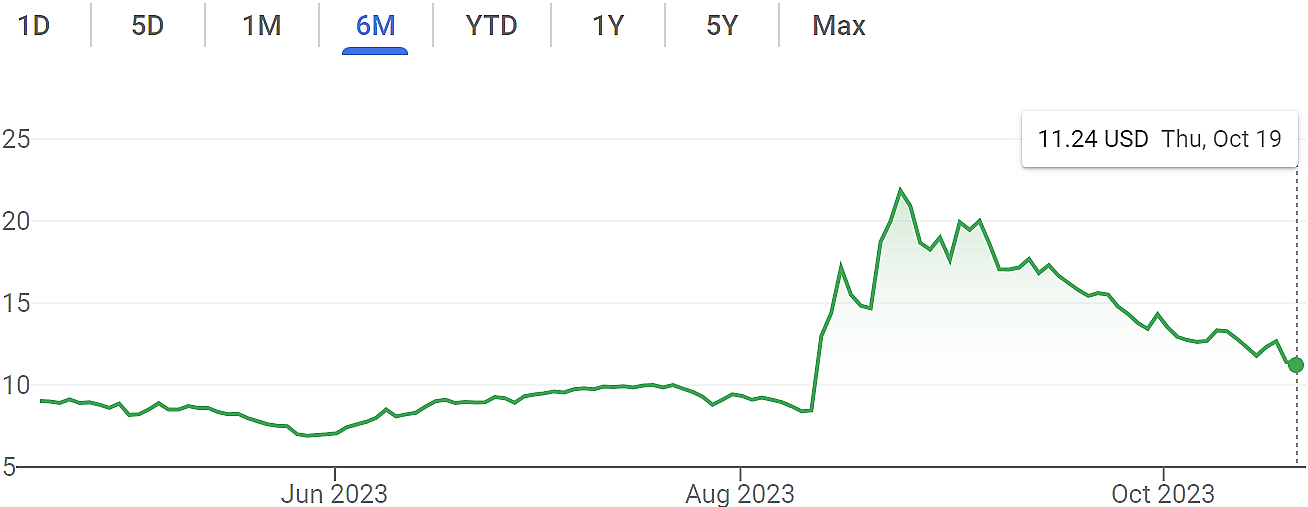


|
||
|
||
In 2017, Telesat, an established Canadian geostationary satellite operator, announced a planned low-Earth orbit Internet service constellation. The plan called for 117 satellites with inter-satellite laser links in a mix of inclined and polar orbits, enabling global coverage. They planned to ignore the consumer market and designed for the enterprise, government, mobile backhaul, mobility, and rural community markets. The mass of their production satellites would be roughly four times that of SpaceX’s first-generation satellites. Telesat orbited their first test satellite a month before SpaceX.
Today, there are over 5,000 Starlink satellites in orbit and Telesat plans to begin launching production satellites in 2026 and won’t begin service until 2027. How did Telesat fall so far behind?
Unlike SpaceX, which is fully integrated, Telesat sought vendors for satellite manufacturing, antennas, and launch service, and spent time and money on collaborative design with potential contractors and soliciting and evaluating bids. In February 2021, Telesat selected Thales Alenia Space as the prime contractor for an initial constellation of 298 satellites. (Musk’s integrated approach to manufacturing cars or rockets is reminiscent of Henry Ford)
In 2022, Covid, supply chain shortages, inflation, and financing difficulties, led Telesat to cut the constellation to 198 satellites. The schedule slippage raised concerns over Telesat’s spectrum licenses (they will have to apply for an extension), and they needed additional capital while their geostationary satellite revenue was declining slightly. Telesat stock, which was offered at $40 per share, was trading for a fourth of its initial price, and bonds were trading well below par.
Telesat recently announced two decisions that Tim Farrar, President of TMF Associates, characterizes as a Hail Mary play.

Last month, MDA, which had been selected to provide Telesat antennas last year, replaced Thales Alenia Space as the prime contractor and manufacturer of the satellites. Telesat expects the new satellites to be about 750 kg—around the mass of SpaceX’s second-generation “Mini” satellites. With these changes, Telesat has funding for the first 156 satellites with the remainder to be paid for from revenue once 156 are in service.
This month, Telesat announced that they had contracted with SpaceX for fourteen launches starting in 2026. (Note that SpaceX is also launching satellites for competitor OneWeb and Amazon is being sued by shareholders for not considering SpaceX to launch their competing Project Kuiper satellites).
Telesat has lost valuable time. The delay has given SpaceX time to sign over 1.5 million customers, enter the non-consumer markets Telesat is focusing on, and begin launching their second-generation satellites equipped with inter-satellite laser links in both polar and inclined orbits. OneWeb will also be in service and competing with Telesat by 2026. Telesat also says that, despite having geostationary satellites, they will not provide multi-orbit service, while others will.
I was on a podcast panel a while back with a Canadian colleague, and he believes the Canadian government will keep Telesat going if needed. I hope Telesat completes its Hail Mary pass—we need all the competition we can get, and the government and military need alternatives to Starlink.
Update Oct 19, 2023:
 <
<Telesat explains the benefits of its Lightspeed constellation over rival LEO broadband constellations.
These points are intended to differentiate Telesat from SpaceX, which has a head start in consumer and non-consumer markets, but the stock market is not impressed.
Update Feb 26, 2024:
Avanti Communication, a geostationary satellite operator (GSO) serving government and enterprises in Africa and Europe and Telesat have signed a memorandum of understanding to provide multi-orbit Internet service. Avanti will be marketing Lightspeed service, but the two constellations will operate independently and will not be federating using Aalyria Spacetime.
GSOs are diversifying by launching non-GSO constellations (SES and Telesat) or buying a low—Earth orbit (LEO) company (Eutelsat-OneWeb). Avanti had decided to market Lightspeed, giving them a LEO product and giving Telesat a customer. Still, Telesat stock continues to fall.
Update Apr 7, 2025:
Things are looking up for Telesat. Geostationary satellite operators Viasat and Space Norway have signed contracts to provide multi-orbit Internet service using Telesat’s low-Earth orbit (LEO) service, Lightspeed, and, while SpaceX Starlink is essentially the entire LEO Internet service today, political shifts between the US and Canada—a trade war and threat of annexation—are improving Telesat’s prospects.
Canada’s federal government has disclosed a revenue backlog of 600 million Canadian dollars ($419 million) for Lightspeed, comprising mostly a 2020 commitment to provide subsidized broadband services to rural communities and CEO Dan Goldberg said it is very likely LEO commitments will this year surpass the 1.1 billion Canadian dollar backlog Telesat recorded for its geostationary orbit (GEO) business at the end of 2024.
They are still lagging—Goldberg added, “We’re still about a year and a half out from our first launch.” Amazon, OneWeb, and Chinese companies will be ahead of them.
Update May 14, 2025:
Arab Satellite Communications Organization (Arabsat), which provides geo-stationary service in the Middle East, Africa, Europe, and Central Asia, has signed a term sheet with Telesat for a multi-Gbps capacity pool of Telesat Lightspeed connectivity services.
Established in 1976, Arabsat is an initiative launched by 21 Arab countries, is wholly owned by the Arab League, and has over 300 million customers. By way of contrast, Starlink offers service in Oman, Qatar, Yemen, and Jordan and just received permission to serve aviation and maritime shipping in Saudi Arabia.
Sponsored byIPv4.Global

Sponsored byVerisign

Sponsored byWhoisXML API

Sponsored byVerisign

Sponsored byRadix

Sponsored byDNIB.com

Sponsored byCSC
